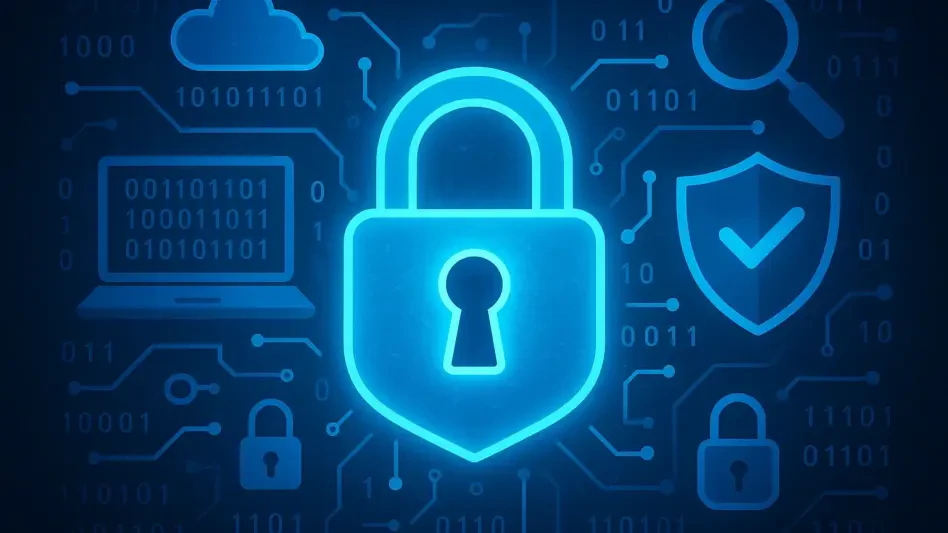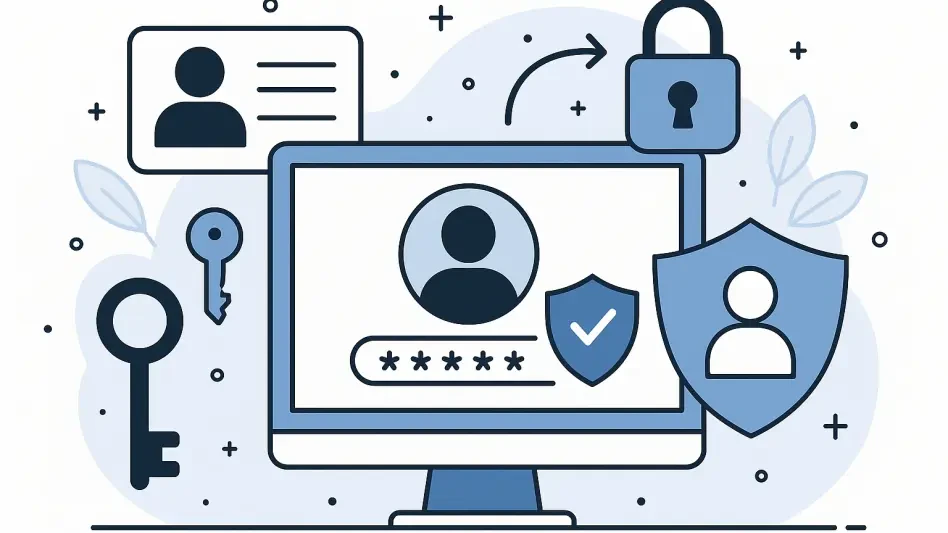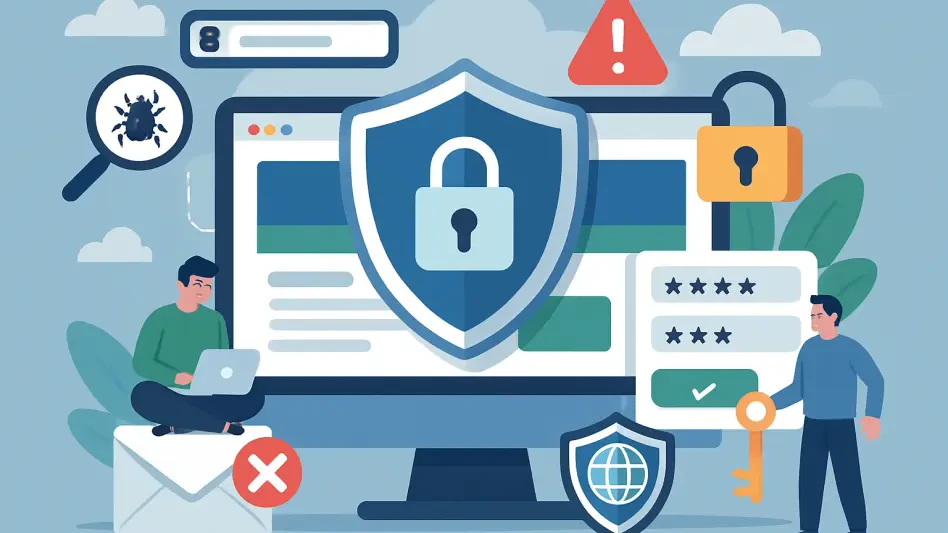AI continues to revolutionize the cybersecurity landscape, providing businesses with new defense strategies while simultaneously prompting hackers to employ more sophisticated methods. Businesses without quality AI defenses leave their systems vulnerable to cyberattacks.
According to Astra’s cybersecurity statistics for 2025, only 14% of small and medium-sized businesses are prepared for modern-day cyber threats, while more than 40% of them experience AI-related security attacks annually.
This article will discuss AI’s impact on cybersecurity for both businesses and criminals, expose popular methods used to steal information, and outline security techniques businesses use to stay one step ahead.
Artificial Intelligence’s Role in Modern Security
A business’s ability to safeguard its data and systems relies on its IT technicians and cybersecurity professionals. They are responsible for implementing and managing security protocols, monitoring data breaches, responding to every incident, and ensuring compliance.
Regardless of the sophistication of this technology, 88% of system breaches are due to human error, negligence, or lack of awareness, often leading to security vulnerabilities. These lapses create openings that could lead to exploitation.
The application of AI technology in cybersecurity removes the probability of these errors occurring and enables businesses to:
Adapt to new malware threats with machine learning.
Automate threat detection.
Identify user patterns.
Systems monitoring.
Analyze data and patterns
Respond to every security alert in real time.
However, the innovation of AI usage has proven to be a double-edged sword, equipping both legitimate businesses and criminals with the tools they need for their respective objectives.
AI as a Weapon: How Criminals Leverage It for Cyberattacks
The famous clothing brand Adidas recently announced a data breach. Their statement mentions a notice of unauthorized external access to customer data. They had to seek assistance from leading information security experts to protect the privacy of their customers.
This incident is one of many similar reported attacks. When it comes to securing your business’s system against cybercriminals, there are many factors to consider, such as data encryption, robust firewalls, and the cost of security.
Cybercriminals use AI and machine learning to improve tried-and-true attack methods. The technology is used to automate and accelerate criminal activity, such as identifying vulnerable areas in code and discovering backdoors to systems.
Popular Phishing Methods Improved by AI
Text Phishing
Phishing is a social engineering technique used by criminals to coerce victims to provide personal information or money through suspicious emails, texts, or phone calls. This is achieved by impersonating trusted personnel, such as security, to reveal sensitive information like an address or passwords.
AI technology can be used to improve phishing efforts by making messages sound more personable, convincing, or even menacing. Adding personalized information obtained from victims’ online activity, like their job titles, can make all the difference between ignoring the phishing attempt and responding to AI-written texts.
This innovative technology is not confined to one task at a time. AI can make it possible for criminals to write multiple phishing schemes simultaneously, creating more victims and expanding attackers’ reach.
Visual Phishing
This is a relatively new approach aided by the advancements AI has made in image and video generation. Criminals use this to create images and videos that don’t exist anywhere online. These visuals can be used in scams like creating fake profiles, deepfakes, or websites to make the phishing scheme seem more legitimate.In 2024, an employee at a firm fell into this scam and cost the company $25 million simply by entering a conference call with what he perceived as his fellow employees and the company’s CFO. The video footage in the image had convincing deepfakes that convinced the individual to send the attackers 200 million Hong Kong dollars, which converts to about $25.6 million.
Voice cloning
Similar to visual phishing, this method involves using algorithms to analyze recordings of someone’s voice and clone it to impersonate them. Even a three-second voice sample taken from social media videos can be enough to create a realistic copy.
With this technology, criminals can blackmail the individual or use it to scam people close to them into sending money or sharing personal information. The copies can be nearly identical to the original, making it difficult to distinguish them as AI-generated.
AI as a Shield: How Businesses Boost Cybersecurity with AI
Cybersecurity professionals can’t afford to be complacent in 2025. AI-improved malware, phishing attacks, and ransomware are a few technologies experts have to be prepared for. In the landscape of increasingly sophisticated technology being used by criminals, businesses are increasingly relying on artificial intelligence to bridge the gap and strengthen their security defenses.
“To defend against AI-generated threats, you need the same caliber of response, using next-generation AI to stay one step ahead,” says Carl Fraggett, Chief Information Officer of Cybersecurity at Deep Instinct.
A strong defense plan coupled with the use of AI can protect an organization’s data. Taking a proactive approach and enabling automated cybersecurity covers all the bases that IT technicians might miss. Putting AI on autopilot provides 24/7 system monitoring and reinforces cyber threat intelligence. This provides security staff with time better spent on other tasks rather than addressing system errors.
The effect of cyberattacks doesn’t just leave a wound in business systems; they also greatly impact finances. According to Statista, cybercrimes cost the world $9.5 trillion in 2024, with the amount expected to rise to $13.82 trillion by 2028.
Practical Cybersecurity Tips
With the increasing success rate of cyberattacks for both private and public entities, the Cybersecurity & Infrastructure Security Agency suggests best practices to strengthen the security of cyberspaces, including:
Avoid clicking suspicious links in emails or unsolicited messages, as this might be a phishing attempt.
Use strong passwords that include numbers and symbols.
Regularly update your software and report every breach.
Enable multi-authentication methods for applications and systems.
These tips can be helpful for both private businesses and individuals. Avoiding implementing these simple tasks greatly decreases online security and leaves a big enough opening for criminals to take advantage of. Even if hackers don’t access financial accounts, accessing your location through an IP address is sometimes enough.
Conclusion
AI technology has the power to revolutionize cybersecurity. Its ability to analyze vast amounts of data, extract valuable insights, detect foreign patterns, and monitor systems makes it an invaluable asset to assist IT technicians.
It’s important to remember that any advancement made can be used in criminal activity, including technology that improves and aids various industries. This can lead to the advanced utilization of AI in phishing schemes and other cybercrime methods to steal information and money.
As secure as a business’s system is, the individuals employed by an organization might not operate secure devices and may be vulnerable to modern cyberattacks. Companies can protect themselves by helping their employees stay aware of new criminal trends and providing security training.








